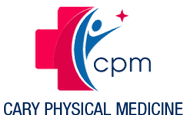Disc Pain Treatment
Request Appointment
Hero Request Form
Make Your Disc Pain a Thing of the Past
Whether you're noticing numbness in your extremities or you've been experiencing pain caused by irritated nerves, you may be suffering from disc pain, and Cary Physical Medicine is here to help. We specialize in disc pain treatment plans that'll help relieve symptoms of your disc condition and get you back to life as usual in no time.
Discs are the soft material between the vertebrae that absorb the shock everyday activities, such as walking and jumping, have on your body. Disc pain can occur anywhere in the spine and usually is caused by a bulge or herniation, which occurs when the disc starts to degenerate, weakening the material and allowing it to bulge or spread into the spinal cord and compress your nerves.
The two ways to treat disc pain are surgery and non-surgical spinal decompression therapy. Surgery doesn't correct the problem that initially caused the disc issues, only removing the disc material that has entered the spinal cord. This typically results in the discs continuing to degenerate and spread, which means you'll likely need surgery more than once after the material begins compressing your spinal cord and nerves again.
At Cary Physical Medicine, we often recommend non-surgical spinal decompression because it treats the cause of the issue, resulting in more effective long-term results. During this treatment, we will gently stretch your spine to create a vacuum-like pressure between your vertebrae that pulls in nutrients the discs need to stay healthy and prevent herniations. The vacuum-like mechanism also helps pull the out-of-place discs back between the vertebrae, relieving pressure on the nerves and spinal cord.
If disc discomfort and pain inhibit your everyday life, Cary Physical Medicine is here to help. We have 40 years of experience you can count on to help you find an individualized treatment solution that works for you. Call us today to learn more or to take advantage of our same-day services. Don't forget to ask about our veteran discounts!
Common Disc Conditions
Degenerative Disc Disease
Caused by normal wear and tear of the spine over the years, degenerative disc disease occurs when the cushion-like discs between your vertebrae begin to weaken and degenerate. If these discs become too degenerated, you may experience pain, weakness, numbness, and tingling in the neck, back, or legs.
Herniated Disc
A herniated disc occurs when the soft material in the spinal disc ruptures and is pushed into the spinal canal. If this happens, you may experience severe pain. Other symptoms of compressed nerves are numbness, tingling, and weakness in the arms or legs.
Foraminal Stenosis
The openings between the bones in your spine, called the foramen, have nerves from the spinal cord that pass through them to the rest of your body. The narrowing of these openings is called foraminal stenosis, which most commonly occurs as a result of a bulging or herniated disc.
Spinal Stenosis
Spinal stenosis, or the narrowing of the spinal canal that holds the spinal cord, is most commonly caused by bulging or herniated discs that end up pushing into the spinal canal. This puts pressure onto the spinal cord and can cause many issues, such as pain and trouble with walking and balance. It can also cause weakness, numbness, and tingling in the extremities. If left untreated, spinal stenosis may lead to permanent nerve damage, including paralysis.
Reviews
Related Services
Learn More About Cary Physical Medicine
Located at 395 Cary Algonquin Rd, Suite C, Cary, IL, Cary Physical Medicine specializes in spinal decompression therapy and peripheral neuropathy treatment. Same-day treatments. 40 years of experience. Veteran discounts. Call us today.


Share On: